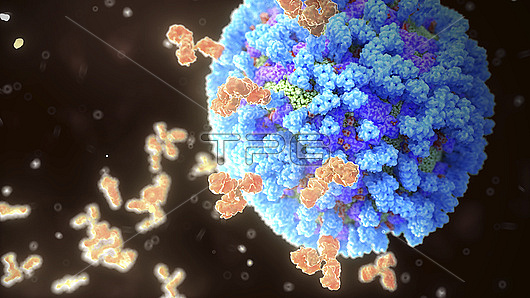
Antibodies binding influenza virus. Illustration of human antibodies (orange) neutralizing a influenza virus particle (blue). Each Y-shaped molecule has two arms that can bind to specific antigens. In doing this they mark bacterial or viral antigens for destruction by phagocytes - white blood cells that ingest and destroy foreign bodies. Immunoglobulin (Ig) antibodies bind to hemagglutinin (HA) or neuraminidase (NA) antigens on the surface of influenza virus particles, which prevents their attachment and infection of human cells. Influenza is in the orthomyxovirus group of viruses. It infects the respiratory tract and causes fever, aching muscles, a sore throat and fatigue. New strains of the virus develop rapidly, and can cause epidemics.
| px | px | dpi | = | cm | x | cm | = | MB |
Details
Creative#:
TPG32640936
Source:
達志影像
Authorization Type:
RF
Release Information:
須由TPG 完整授權
Model Release:
N/A
Property Release:
N/A
Right to Privacy:
No
Same folder images:

 Loading
Loading